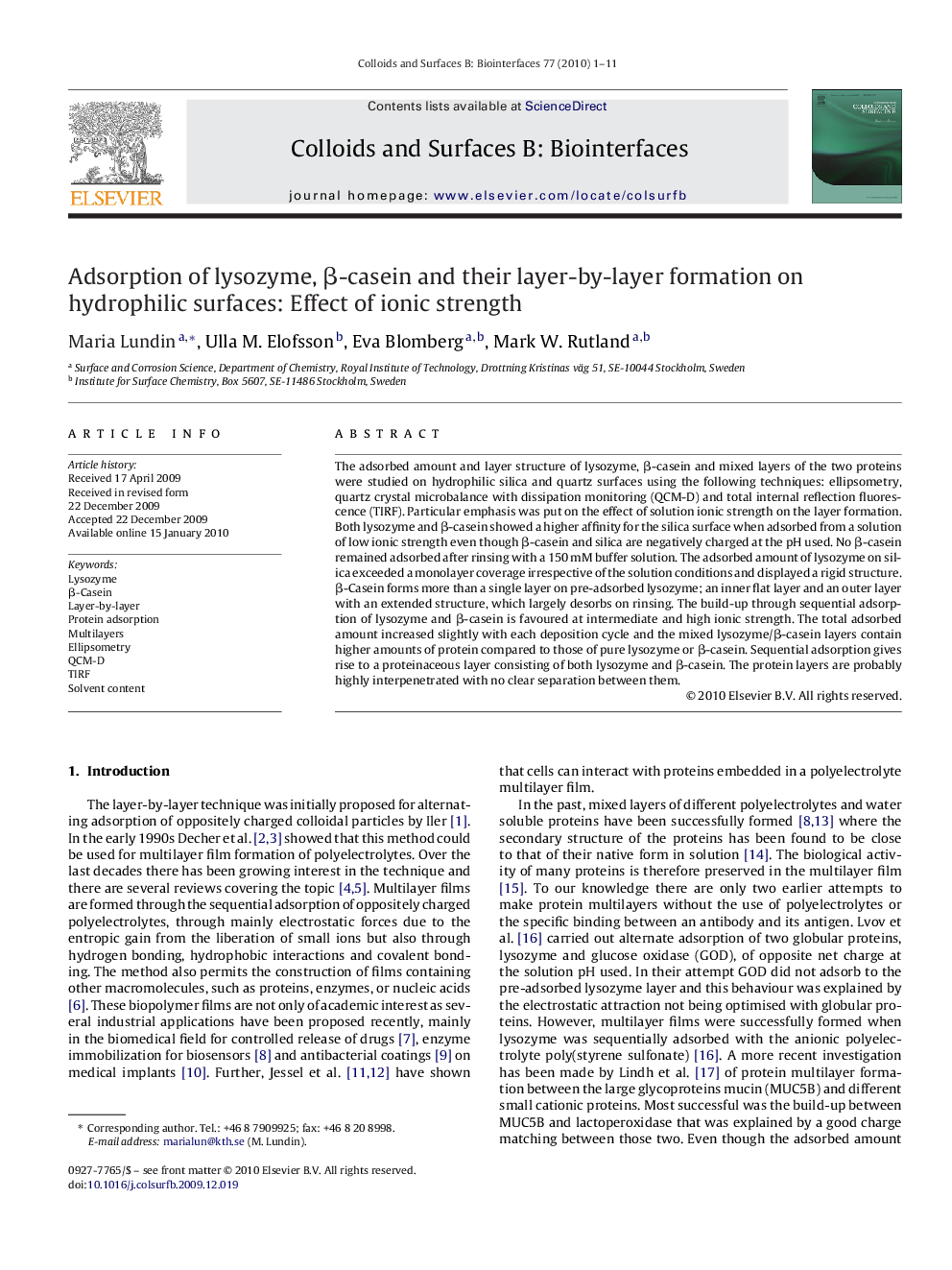| Article ID | Journal | Published Year | Pages | File Type |
|---|---|---|---|---|
| 601754 | Colloids and Surfaces B: Biointerfaces | 2010 | 11 Pages |
The adsorbed amount and layer structure of lysozyme, β-casein and mixed layers of the two proteins were studied on hydrophilic silica and quartz surfaces using the following techniques: ellipsometry, quartz crystal microbalance with dissipation monitoring (QCM-D) and total internal reflection fluorescence (TIRF). Particular emphasis was put on the effect of solution ionic strength on the layer formation. Both lysozyme and β-casein showed a higher affinity for the silica surface when adsorbed from a solution of low ionic strength even though β-casein and silica are negatively charged at the pH used. No β-casein remained adsorbed after rinsing with a 150 mM buffer solution. The adsorbed amount of lysozyme on silica exceeded a monolayer coverage irrespective of the solution conditions and displayed a rigid structure. β-Casein forms more than a single layer on pre-adsorbed lysozyme; an inner flat layer and an outer layer with an extended structure, which largely desorbs on rinsing. The build-up through sequential adsorption of lysozyme and β-casein is favoured at intermediate and high ionic strength. The total adsorbed amount increased slightly with each deposition cycle and the mixed lysozyme/β-casein layers contain higher amounts of protein compared to those of pure lysozyme or β-casein. Sequential adsorption gives rise to a proteinaceous layer consisting of both lysozyme and β-casein. The protein layers are probably highly interpenetrated with no clear separation between them.
